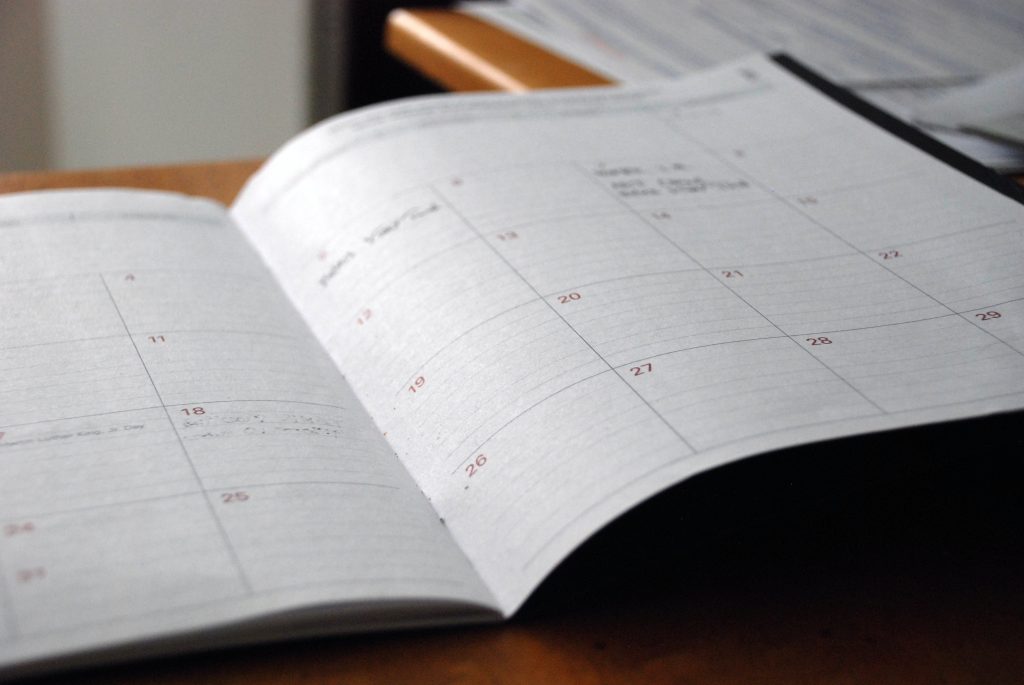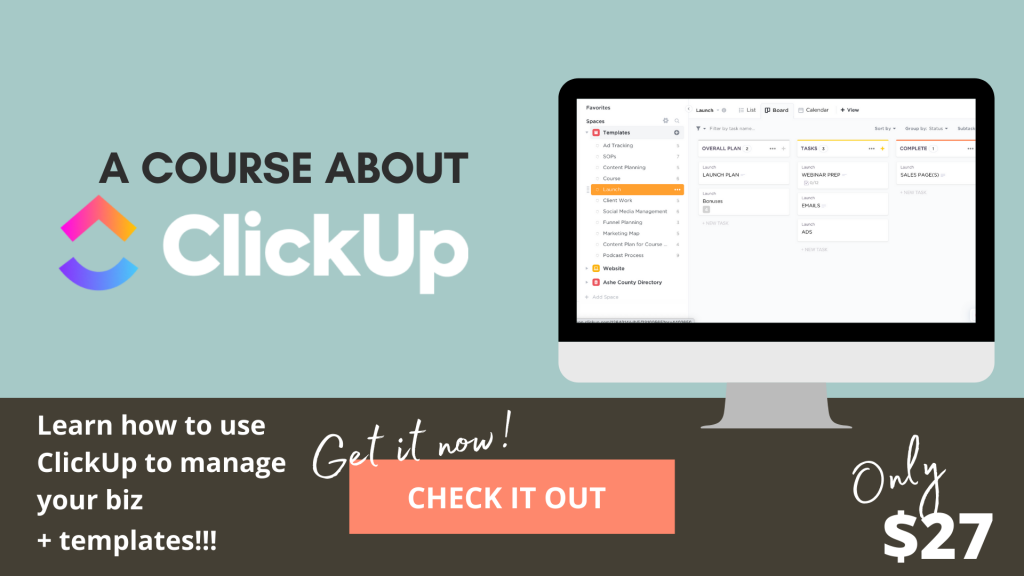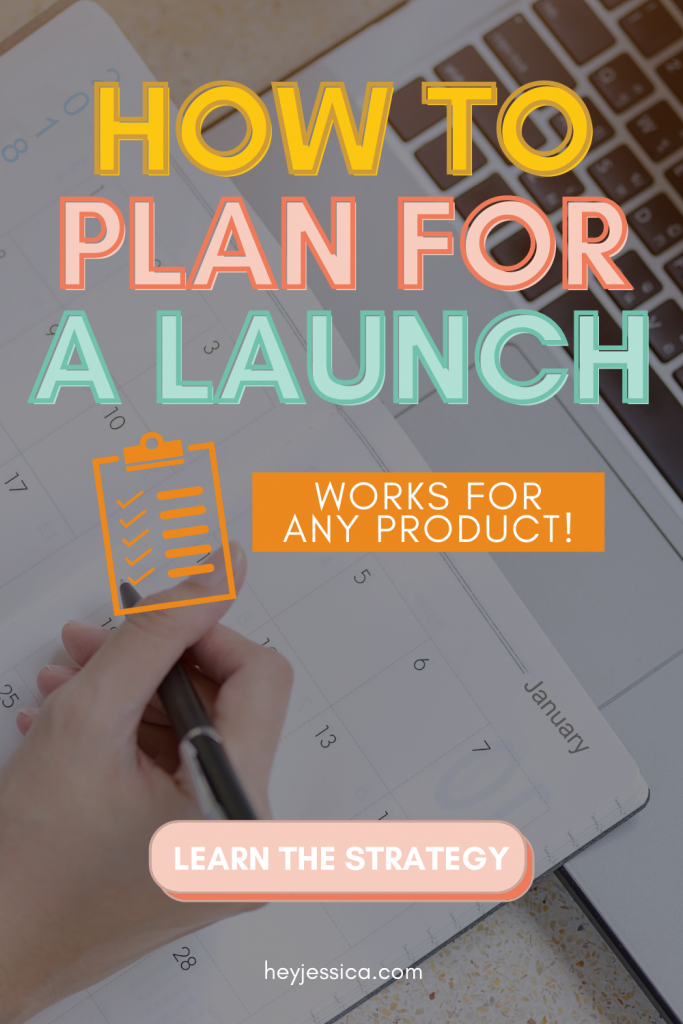If you have ever wanted to launch anything… then this is the guide for you! I’m preparing to launch a course in two months, and I’m working to plan it out each step of the way to make sure everything is ready to go and my team and I aren’t stressed. Come along and plan with me for a course launch in ClickUp!
PLAN WITH ME for a Course Launch in ClickUp | Setting Goals, Creating Systems, Being a Rockstar

Want to watch a video version of this post? I’ve got you covered!

I’m gearing up for a course launch in June, so I need to plan out those dates and get a plan in place!
Once I know the goal for the launch date, I need to reverse engineer all of the due dates for myself and my team. That way, I can plan out what my team and I need to do every week (and even every day!) to make sure the launch goes well.
This method will work whether you want to launch a course, a physical product, merch, a digital product, a service, a podcast… ANYTHING! Preparatory launch strategy stays the same across products.
I use this method with EVERYTHING I’m planning, so I promise this method will be useful for you.
I’ve learned that I am at my best when I’m working toward a goal.
I get the most done, stay my most productive, and do my best work when I have a goal to work toward. Sure, I take a step back after each push period to avoid burnout, but if I don’t have a goal to work toward at the end of that break, then I’m not at my best.
If that sounds like you, or you have any sort of personal, financial, or business goals that you want to hit but aren’t sure where to start, this is the method for you.
Step 1 – Look at your calendar and set a timeline
I always say that you need at least 6-8 weeks to launch ANYTHING. You need to give yourself enough leeway to get everything accomplished. If you don’t have a team, you might need longer than 6-8 weeks. If this is a re-launch, you may need less time.
I use my Google Calendar to get an idea for 6-8 weeks in the future and take a look at what else I have going on at the time. For me, knowing that we are pushing a lot of work into May since my kids will be on summer break in June meant I wanted to push this launch until June. I will ALWAYS push a launch further away to save my sanity and my team’s sanity.
Step 2 – Get set up in your project management software
You all know I love ClickUp, so I set up a brand new folder for my launch within my “programs” folder. In that folder, I set up an “Ideation” list and a “Launch” list where all of the moving pieces get dumped.
Ideation holds all of my ideas. How we’re going to launch, what the course looks like, etc. The Launch list is always pinned to a calendar view so I can literally map out everything backwards, by date.
I prefer to launch my courses using a webinar. However you choose to launch your new offering is totally fine! We still need to get some prep work done.
Step 3 – Plan your MAJOR dates on your calendar
I’ve decided that I want to launch my course by hosting a webinar on June 22. So, I note June 22 as my launch date. Then, I work backwards.
I know that I need promotion time to get people signed UP for my webinar. So, I add “Start promoting webinar” to my calendar on Friday, June 11. That gives me about 11 days to promote, promote, promote this webinar.
Step 4 – Reverse engineer ALL of to-do items to make the launch happen
My recommendation is to create an SOP (standard operation procedure) that details EVERYTHING that needs to happen prior to a webinar launch. That way, you can have it to reference for any launch you want to do in the future.
I have an SOP set up for everything that needs to happen 3-4 weeks before a webinar in terms of prep work, email schedule, and social media schedule. That way, my team and I know exactly what needs to get done and can apply that schedule to this launch!
This definitely takes practice and some trial and error. I’d recommend giving yourself more time than you think you need the first time around and adjusting from there. Be sure to give yourself specific tasks and due dates to make it easier.
For example, if I know there will be 10 emails associated with this launch (whether they’re warm-up emails, actual offer promotion, or cart closing reminders), then I’d plan the date each email needed to be sent and give myself a specific due date when I needed to have them ALL written.
After I plan the actual course launch, I have two other areas of my business I need to plan for: my sales goals, and my free content leading up to the launch.
Once I figure out the dates that everything is happening, I need to plan out how much money I want to make, how many people I want to help, and how my free content works toward the goal of launching this course.
This is the MAGIC sauce, y’all.

Setting financial launch goals
When you hear people talk about having a $100,000 launch, that didn’t happen by accident! They absolutely planned for that to happen. On the flip side, if you aren’t sure how to use your current metrics to anticipate launch goals, then you are going to come out the other side really disappointed and frustrated.
If I know I’m launching something in June, then I’m going to work toward growing my audience in that time frame to make sure I have even more people in my audience to hit my goal.
Again, you have to do this a few times to really figure out where your numbers are at. Based on my past experience, I know that I can generally sell a course that I launch with a webinar to between 7-15% of all of the registrants for a webinar. I’ve even gone up as high as 25% before, depending on the webinar and course topic.
Conversion rates will differ between people and between the type of launch. It’s a very personalized amount that you have to figure out for yourself with time.
Example goals and how to achieve them
Let’s say I want to sell 100 of my new course at $1,000 each. I want to make $100,000 from a launch.
If I know I can sell to between 7% and 15% of people who sign up for the webinar, then I need to figure out how many people I need to sign up to reach that goal. In this case, if I get 1,000 people to sign up for this webinar, and I estimate that 12% of those people will buy the course, then I will sell 120 seats into my course.
Now, I need to figure out how to get 1,000 people to sign up to my webinar. Maybe I can look back at past examples and see that Facebook ads can get X people to sign up for my webinar who convert at a certain rate. Or, can I attract people to my email list in a certain way that will increase my sign ups?
I know that I can get 6-10% of people on my email list to sign up for a webinar. If I know that 6% of the people on my email list will sign up for my webinar pretty automatically, and I have 10,000 people on my list, then that’s about 600 sign-ups.
But my goal is to get 1,000 people to sign-up for my webinar. So, that means I have 8 weeks to attract 400 more sign ups. Now you can determine the best way to make that happen, whether it’s a new freebie, a small-offer funnel, or something else.
I use a Good, Better, Best System to plan my course launch goals
I like to set my “Better” goal as a realistic PUSH goal. In this case, that’s 1,000 webinar sign-ups.
My “Good” goal is going to be one that’s a standard number I can achieve without audience building. With this example, it would be the 600.
My “Best” goal is going to be a far-reaching goal that would take some work to hit! Maybe that’s getting 1,300 people to sign up for this webinar so I could sell 150 course seats. I will ALWAYS shift my mindset to go after that “Best” goal. But if I fall somewhere between my good, better, and best goals, then I’ve done my due diligence.
If you’re planning along with me, then I want you to remember that I have an audience! If you’re just starting out or have a really small audience, getting 1,000 people to a webinar probably won’t happen. Set realistic goals that you can meet!
How I plan my free content before launching
My free content leads up to my launches, too! But if I ONLY talk about the topics I want to launch a course about for the next 8 weeks, it’s going to get super mundane and boring for my audience.
So, I start brainstorming what someone who is 8 weeks away from buying a course about this thing is wondering. What questions do they have? What are they thinking about? Then, I start incorporating it into my content.
Then, closer to my actual launch time, I am pushing that topic more.
Maybe I’m launching a course about Instagram. 8 weeks out, I’ll start posting content about how to decide what the right social media platform is for you, or how to plan content without it taking over your life. Imagine the questions this person is asking and create content to answer them!
Then, for four weeks prior to launch, I start to lean in to the “hard” topics that are directly related to the course. If I’m launching this Instagram course, I will do a video about hashtag strategy on Instagram, etc.
Whew, that was an in-depth plan with me for a launch in ClickUp! I hope this has given you ALL the tools you need to launch all the things. You've got this!

+ show Comments
- Hide Comments
add a comment